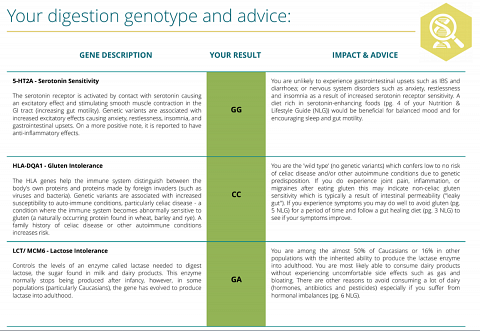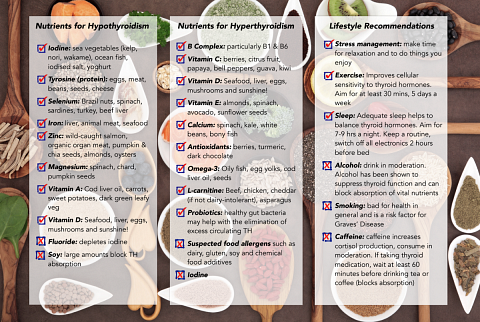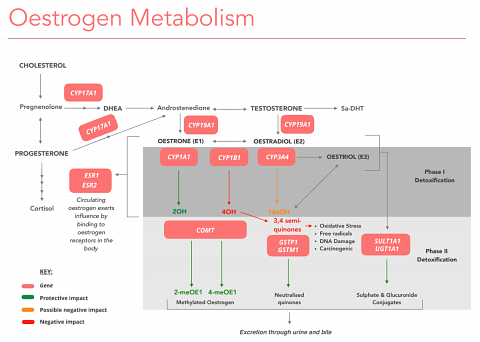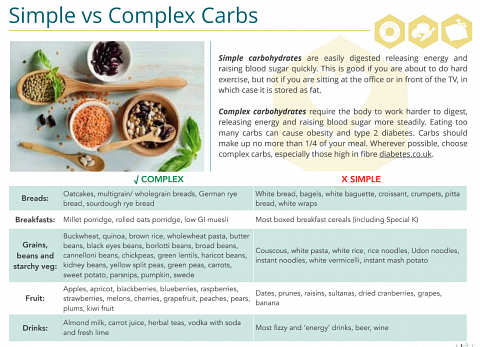-
VitaGEN
review on 4 October 2018
by Rebecca Fishwick

At a Glance
Summary
The Vitagen-X reports were well-researched and full of valuable health information, though at times a little too science-laden for me to easily understand them. A complimentary phone consultation was included in the service, and so if I needed some of my results explained, I was able to get help. The ThyroidGEN and VitaFEM reports were rather more specialised, and so I’d recommend that anyone taking these take advantage of the free consultation.
The VitaGEN report was pleasingly comprehensive, and I was able to understand its contents without trouble. The table format in which the results were given made it easy to see what my genetic results were and what this meant for me, while the Nutrition and Lifestyle Guide included plenty of useful supplementary material.
Full Review
Vitagen-X is a start-up nutrigenomics company begun in 2017 by director Kate Scott, a UK-certified nutritional therapist and member of the British Association for Applied Nutrition and Nutritional Therapy (BANT).
The genetic tests offered by Vitagen-X have been developed to explore the basis of our health encoded in our DNA. The team at Vitagen-X believes that factors such as lifestyle, diet, stress and sleep determine our ultimate health and wellbeing.
Product Expectations
The Vitagen-X website had a sleek, almost medical feel. I found that they offered a range of tests. ‘VitaGEN’ focussed on nutritional information, while ‘ThyroidGEN’ was a more specialised thyroid DNA test, and ‘VitaFEM’ was dedicated to female health.
The ‘VitaGEN’ and ‘ThyroidGEN’ tests had different gradations of comprehensiveness. The ‘-GEN’ tests were the most basic, but included a DNA test, nutrition advice, and telephone support. The ‘-PLUS’, ‘-PRO’ and ‘-ELITE’ tests also included blood and adrenal tests, a home visit from a nurse, and something called “intestinal dysbiosis”, which I presumed is a gut microbiome test.
There was an invitation to contact them if I already had my DNA results from 23andMe, and I wondered whether there was a discount for those who had already had their DNA tested.
On the Order page I discovered I could view a description of what was included in each report by clicking "DNA Test & Full Report", however it wasn't obvious that this text was clickable, and I would have appreciated a little more information about what precisely was included.
Ordering Experience
I could order the DNA tests through the Vitagen-X website. This required me to fill in a form, which had a very clinical feel. It asked for a practitioner name (I didn’t have to give it; this was only if I was taking the test with my doctor). I had to give my name, email, street address, date of birth and sex. There was a box where I could include any symptoms or concerns I have.
Before ordering, it was necessary to agree to the Terms and Conditions, and so I had a look through these, and the Privacy Policy. In the Privacy Policy, I read that my sample would be destroyed after three months, in case I requested any further testing (which would not be carried out without my express permission). I could request it to be destroyed earlier.
The company was GDPR-compliant, which was nice, and would inform me and allow me to opt out before using my information for marketing purposes.
I could choose to share my genetic information with my healthcare provider if I wished. Nowhere did I see that they would share my genetic data with third-party researchers, or use it for their own research, and so I presumed they wouldn’t.
Having looked through their policies, I was happy to continue with my order.
I could pay with a credit or debit card. After placing my order, I received my kit by post within a couple of days.
The kit resembled the box I’d seen pictured on the site. I was surprised by how untechnological the test was: instead of a code to register my kit online, there was a paper form to fill in, and stickers with my kit number on. Filling in the form, I was required to give my full name, kit ID number, the date, and a signature. Again, I had to agree to the site’s Terms and Conditions.
Taking the cheek swab sample was very easy, and there were instructions included in the kit. There was a prepaid and labelled envelope for returning my sample. I nearly missed a note saying that I should only send the sample back between Monday and Wednesday, presumably because the sample wouldn’t last over the weekend.
I posted my sample back the same day. They had included a first-class envelope, and a note in my kit instructions told me it would take one to two days to reach the lab. I would receive my results in an email.
The Results
I received my results six weeks after returning my sample, which is pretty prompt for a genetic health test. I received an email with a Google Drive link, where I found my VitaGEN, ThyroidGEN, and VitaFEM reports waiting, along with a Vitagen-X Nutrition and Lifestyle Guide.
VitaGEN Report
The VitaGEN report was pleasingly comprehensive, covering digestion, metabolism and blood sugar, stress response, immunity, nutrients, stimulants, exercise, and sleep. There was an introduction to genetics, and an explanation of the results and the colour-coding that had been used to indicate whether a genotype (combination of genetic variants) was desirable or detrimental.
Digestion
Each section had its own introductory page, which discussed the biology behind each area, and which genes were involved. For Digestion, they had looked at three genes: 5-HT2A, to do with serotonin sensitivity, HLA-DQA1, to do with gluten intolerance, and LCT/MCM6, associated with lactose intolerance.
My genotypes for all three genes were desirable, being either protective or non-detrimental (shown below).

My genetic results for Digestion.
My sensitivity to serotonin was desirable, and so I was unlikely to suffer from “gastrointestinal upsets”, which was good news, and rang true, since I’ve never really had digestive problems.
My genetics also indicated that I was unlikely to suffer from celiac disease, and so unlikely to be intolerant to gluten, which I am not, so I was satisfied with that. I’m not lactose intolerant either, which was also indicated in my results. I read that just under 50% of Caucasians and 16% of other populations have this genetic ability to produce lactase (the enzyme that breaks down the lactose in cow’s milk) after infancy. It surprised me that being predisposed to lactose intolerance is actually the norm!
Metabolism
For metabolism and blood sugar, they had looked at three genes to do with insulin secretion, my leptin receptor, and obesity and type 2 diabetes.
I found I was likely to have healthy insulin secretion, and so lower genetic risk of developing type 2 diabetes. I read that “leptin” is the hormone responsible for the feeling of satiety after eating. People who produce less of it have trouble feeling full, and so may overeat. I found I was likely to have good levels of leptin.
My genotype in the FTO gene – to do with appetite regulation, metabolic rate and caloric intake – wasn’t so positive. Like the LEPR gene governing leptin, this gene also influenced satiety. This time, my genotype predisposed me to having more trouble feeling full, and a greater likelihood of overeating. Admittedly, I am hungry all the time, but I have a fast metabolism!
Stress Response
The stress response section wasn’t such good news for me! I found I had the “Worrier” phenotype (genotype AG in the COMT gene), meaning that my body was less effective in breaking down dopamine and adrenaline, leading to a heightened stress response and a lower pain threshold. I saw that I could find tips for managing stress in the attached Nutrition and Lifestyle Guide.
My gene to do with cortisol regulation (in the introductory info, I’d read that cortisol and adrenaline were both stress hormones) was also less effective, meaning it would take me longer to stop feeling stressed after a stressful event. This didn’t seem to be that uncommon, since I read that 30-40% of the population share this genotype with me.
I also had a genetic predisposition for high blood pressure, which combined with long-term stress could be detrimental to my heart health.
Immunity
My immunity genes seemed a little stronger than my ones to do with stress. I found I was unlikely to suffer from inflammatory conditions, though I read that an unhealthy lifestyle could lead to chronic inflammation regardless of genotype.
I was also likely to have a healthy breakdown of histamine in the brain and lungs. Others whose HNMT gene is overactive may experience allergy-type symptoms such as headaches, coughing, watery and itchy eyes and nose, etc.
However, I may have increased sensitivity to ingested histamine, which can lead to food allergies, gluten sensitivity, skin irritation, anxiety, and other symptoms. I read that if I experience these symptoms (which I haven’t, thankfully!), then I should reduce consumption of histamine foods, alcohol, and black tea (no chance).
Nutrients
The Nutrients section opened with genes related to potential vitamin deficiencies. I was likely to have a healthy amount of vitamin B9 (folate), which helps with methylation and detoxification. However, I was likely to have a reduced ability to transport B12, which breaks down harmful homocysteine, which can be neurotoxic. I was also likely to have a low receptivity to vitamin D, meaning I’d need to consume more.
I found that a variation in my FTO gene (the “fat gene”) made me more prone to obesity and type 2 diabetes (though luckily I haven’t suffered from either yet).

A snippet of my genetic results for Nutrients.
However, another gene made me less sensitive to refined, simple carbohydrates and saturated fats, and so less likely to gain weight and suffer from decreased insulin secretion by consuming them.
I also had a healthy ability to produce nitric oxide, which promotes good cardiovascular health, meaning that I would not require as much omega-3 as other people might, though I should still consume an adequate amount, as it is beneficial to general health.
Stimulants
In the Stimulants section, I found that I could metabolise caffeine quite quickly, though another gene meant I was likely to suffer from sleep disturbance if I consumed it in the evening.
However, I did not have an increased sensitivity to alcohol. I read that people with variations in their ADH1B gene could have as much as a 100x faster metabolism of alcohol to acetaldehyde, causing more severe symptoms of toxicity (facial flushing, nausea, headaches, and increased oxidative damage).
Exercise
My genes for exercise weren’t the best. I saw that I was likely to have good aerobic efficiency and V02max (which I assumed was something to do with oxygen), and that a mixture of power and endurance training would work best for me.
However, I also found I was genetically prone to tendon and ligament injuries due to variants in a gene associated with the production of type 1 collagen, found in connective tissues. I could also be at increased risk of osteoporosis, and it was recommended I consume more vitamin C to promote collagen production.
I found that I – like over 50% of Caucasians – was missing the GSTM1 gene, associated with neutralising free radicals, meaning that I am at greater risk of oxidative stress. I read that excessive exercise, dietary and environmental toxins and chronic stress could increase my risk of oxidative damage, which speeds up ageing. In the Nutrition and Lifestyle Guide, I would find tips for stress management, reducing inflammation, and increasing antioxidants to support detoxification.
Sleep
I found the Sleep section very interesting, as sleep isn’t included in many genetic health reports. I found that my genotype in the CLOCK gene made me an “Early Bird”: likely to enjoy normal or longer sleep duration (true) and to prefer daytime activity and to rise early (true).
Another gene (PER1) put me in between early bird and night owl: likely to be up earlier than one but later than the other. There were also lifestyle tips for maintaining healthy sleep, which said that caffeine, stress, alcohol and bright light can all disrupt the body clock.
I also found that I had a variant in my MTNR1B gene that made me more likely to experience disturbed sleep patterns, particularly early waking. While I generally sleep through the night, I am prone to wake early, especially when I most need sleep, which isn’t ideal! I read that I should aim to get between seven and nine hours of sleep per night, increase my physical activity, decrease/avoid simple carbohydrates and avoid bright light before bed.
ThyroidGEN Report
Next, I took a look at my ThyroidGEN report, which was a dedicated analysis of how my genetics affect the functioning of my thyroid gland. The report began with another introduction into genetics, as well as explanations of the function of the thyroid, and thyroid disorders and disruptors.
This looked at variations in eight genes, and provided interpretations and advice based on the different genotypes I had. I found that certain genes I had were detrimental to my thyroid hormone pathway, while others were more beneficial.
There were also nutrient and lifestyle recommendations for hypo- and hyperthyroidism, and lifestyle tips to do with stress management, exercise, sleep, and avoiding bad habits like drinking too much caffeine or alcohol, and smoking (shown below).

Diet and lifestyle recommendations for thyroid health.
Though the report included an introduction to the purpose and function of the thyroid gland, I had trouble understanding much of this report. However, I don’t think many people would order a specialised thyroid report without reason or knowledge of the thyroid, and that many would order the report through their doctor, who would hopefully understand it!
VitaFEM Report
The VitaFEM report was a dedicated female health report, focussing on the influence of genetics on the oestrogen pathway, the heart, and on healthy ageing.
Oestrogen
There was an explanation of the science behind the production and metabolism of oestrogen, but this was rather too complex for me to really feel I’d understood it.

A diagram showing oestrogen metabolism.
The genetic results detailed how my genes affect the production of oestrogen, my oestrogen receptors, and how my body breaks down oestrogen. These were all pretty dense and not easy for me to understand, but again I supposed that most people would order this test on the advice of their doctor, and I knew that a complimentary phone consultation was included.
Heart Health
In the information for the Heart Health section, I read that oestrogen levels can impact cardiovascular health and risk of developing blood clots.
I found I had two variations in my APOE gene that negatively affect my cholesterol levels, meaning I have a higher risk of elevated LDL (“bad”) cholesterol, which wasn’t great. I also had one variant associated with a higher risk of blood clots, which can be very dangerous.
However, as I’d seen in my VitaGEN report, I had the genetic variants associated with normal NOS activity and healthy nitric oxide production, which protects the health of blood vessels.
Healthy Ageing
In the Healthy Ageing section, I found I wasn’t all that disposed for healthy ageing! I had the genetic variants associated with low choline levels, which gave me a higher risk of non-alcoholic fatty liver disease, along with elevated homocysteine levels, which increase risk of cardiovascular disease.
I also found that I had a variant in my SOD2 gene that lessened my ability to break down superoxide, a harmful free radical. This meant I am at greater risk of oxidative stress, particularly if I drink heavily. A healthy diet rich in manganese foods (e.g. pineapples, chia seeds, hazelnuts, etc.) and antioxidants would help to limit free radicals.
My last results were variants to do with vitamin D metabolism, which my genes weren’t brilliant at. One variant gave me reduced receptivity to vitamin D, meaning I would require a higher amount than other people, while another variant gave me reduced D3 receptor activity, again requiring me to consume a higher amount. I read that vitamin D is important for many functions in the body, including the absorption of calcium and phosphate (for healthy bones and teeth), and the production of the “feel good” chemical dopamine.
The report ended with some diet and lifestyle suggestions, showing what I ought to reduce or eliminate, and what I should increase.
Nutrition and Lifestyle
The last thing I looked at was the Nutrition and Lifestyle Guide, which I had seen many references to in my VitaGEN report. This contained diet and lifestyle advice to supplement the different genetic predispositions listed in the VitaGEN report.
The guide wasn’t personalised, however, and so I could pick and choose my advice depending on the genetic results I already had. For instance, one page listed gluten-free foods, even though I’m not gluten intolerant and my genetic results reflected this. This didn’t mean the guide wasn’t useful, only I had to remember to pick out the parts that were relevant for me!
Much of the advice included was in the format shown below, with a chart detailing what to seek out and what to avoid.

Simple vs. complex carbohydrates.
The guide contained plenty of useful and well-presented information, including lifestyle tips for healthy sleep, reducing stress, and avoiding injury and aiding recovery after exercise.
Summary
The Vitagen-X reports were well-researched and full of valuable health information, though at times a little too science-laden for me to easily understand them. A complimentary phone consultation was included in the service, and so if I needed some of my results explained, I was able to get help. The ThyroidGEN and VitaFEM reports were rather more specialised, and so I’d recommend that anyone taking these take advantage of the free consultation.
The VitaGEN report was pleasingly comprehensive, and I was able to understand its contents without trouble. The table format in which the results were given made it easy to see what my genetic results were and what this meant for me, while the Nutrition and Lifestyle Guide included plenty of useful supplementary material.
Please note we were invited to take this test free of charge.


